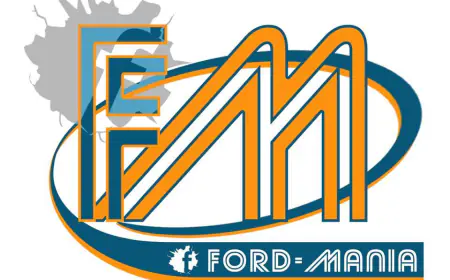Are Slammed Cars Safe To Drive?
Are Slammed Cars Safe To Drive?, Explore the debate surrounding slammed cars - the aesthetic appeal, potential safety concerns, and modifications for responsible car lowering.
Slammed Cars: Style vs. Safety - A Deep Dive
The slammed car aesthetic, characterized by an exceptionally low ride height achieved through suspension modifications, has captivated car enthusiasts for decades. This trend prioritizes aesthetics by significantly lowering the vehicle's center of gravity, creating a visually striking stance. However, the pursuit of this eye-catching style often sparks debate surrounding the safety implications of significantly lowering a car.
Understanding the Appeal of Slammed Cars
The popularity of slammed cars stems from a multifaceted appeal. For some, it's a visual statement, a way to personalize their vehicle and express individuality. The lowered stance creates a sense of aggression and performance, aligning with the preferences of enthusiasts who favor a sportier look. Additionally, lowering a car can improve handling characteristics by lowering the center of gravity, potentially leading to sharper cornering and a more connected driving experience.

The Counterpoint: Potential Safety Concerns for Bagged Cars
While the aesthetic appeal and potential performance benefits of slammed cars are undeniable, it's crucial to acknowledge the potential safety concerns associated with this modification. Lowering a car significantly reduces ground clearance, which can translate to several potential risks:
Increased risk of bottoming out: Bagged Cars with minimal ground clearance are more susceptible to scraping the undercarriage on uneven roads, speed bumps, or driveways. This can damage vital components like the oil pan, exhaust system, or suspension parts, leading to costly repairs and potential safety hazards.
Compromised handling in certain situations: While lowering can improve handling in some scenarios, it can also have unintended consequences. Reduced ground clearance can limit the car's ability to navigate rough terrain or uneven surfaces, potentially impacting handling and stability.
Altered visibility: In some cases, extreme lowering can obstruct the driver's forward visibility, making it challenging to see potential hazards like pedestrians or oncoming traffic.

Striking a Stanced Balance: Responsible Lowering Practices
For enthusiasts who still desire a lowered stance while prioritizing safety, there are responsible modifications and considerations:
Maintaining adequate ground clearance: Finding the right balance is crucial. While achieving a lowered look, ensure sufficient ground clearance to avoid bottoming out on everyday roads. Consulting suspension specialists and considering factors like your car's model and intended use can help determine the optimal lowering depth.
Choosing high-quality suspension components: Utilizing high-quality coilovers or lowering springs specifically designed for your car allows for a controlled and safe lowering experience. These components maintain proper suspension geometry and ensure safe handling characteristics.
Maintaining proper alignment: After any suspension modifications, including lowering, it's crucial to get a professional wheel alignment. Improper alignment can lead to uneven tire wear, compromised handling, and increased safety risks.
Understanding the limitations: It's essential to be aware of the potential drawbacks of lowering your car. Be prepared for limitations in certain driving situations and adjust your driving style accordingly, prioritizing safety over aesthetics when necessary.

Expert Opinions and Enthusiast Perspectives
Experts in the automotive industry often advise a cautious approach to lowering cars. While acknowledging the aesthetic appeal, they emphasize the importance of prioritizing safety and responsible modification practices. They recommend consulting qualified professionals, choosing high-quality components, and maintaining proper maintenance practices to ensure a safe and enjoyable driving experience with a lowered car.
Enthusiasts, on the other hand, often express a deep appreciation for the slammed car aesthetic. They recognize the potential safety concerns and emphasize the importance of responsible modifications and informed decision-making. Many enthusiasts dedicate significant time and resources to ensuring their lowered cars are not only visually appealing but also maintain safe handling and functionality.
Conclusion
The debate surrounding slammed cars highlights the importance of striking a balance between aesthetics and safety. While the lowered stance undoubtedly carries visual appeal and potential handling benefits, it's crucial to acknowledge the associated safety concerns. By understanding the risks, implementing responsible modification practices, and prioritizing safety, enthusiasts can achieve their desired aesthetics while maintaining responsible and safe driving habits. Ultimately, informed decision-making, combined with a healthy respect for the potential risks, allows enthusiasts to enjoy the unique appeal of slammed cars while prioritizing their safety and the safety of others on the road.
 Like
2
Like
2
 Dislike
0
Dislike
0
 Love
0
Love
0
 Funny
0
Funny
0
 Angry
0
Angry
0
 Sad
0
Sad
0
 Wow
3
Wow
3

























































































.png)












![[HOONIGAN] Ken Block's GYMKHANA NINE](https://img.youtube.com/vi/_bkX5VkZg8U/maxresdefault.jpg)





































































































































